Gene Editing: The Science, Ethics, and Promise of a Revolutionary Technology
News VideoPerhaps in the past few years, you’ve started to hear more about CRISPR gene editing— the revolutionary technique that allows us to precisely manipulate the DNA of human cells and which provides unprecedented power for understanding and treating disease.
Gene editing is an undoubtedly powerful tool with a lot of promise, but deciding how and when to use it is an ongoing discussion that involves many stakeholders. NYSCF firmly believes in facilitating this dialogue, and at our recent event, Gene Editing and the Future of Human Health—hosted in collaboration with the Johns Hopkins Berman Institute of Bioethics and with support from the Stavros Niarchos Foundation— researchers, bioethicists, and thought leaders unpacked the science behind this revolutionary technology and the ethical issues it presents.
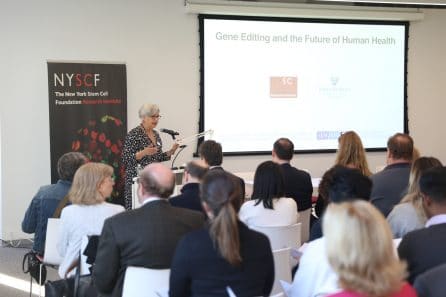
This panel discussion was moderated by Raeka Aiyar, PhD (NYSCF Senior Director of Scientific Outreach), and featured panelists Susan L. Solomon, JD (NYSCF CEO), Jeffrey Kahn, PhD, MPH (Andreas C. Dracopoulos Director of the Berman Institute), Betsy Myers, PhD (Program Director for Medical Research at the Doris Duke Charitable Foundation), and Neville Sanjana, PhD (Core Faculty Member of the New York Genome Center and Assistant Professor at New York University).
What is CRISPR Gene Editing?
When we talk about gene editing, we are typically referring to CRISPR, the foremost gene editing tool. CRISPR’s specialty is allowing researchers to locate and edit stretches of DNA within the genome.
“CRISPR works a bit like the find-and-replace function in Microsoft Word,” explained Dr. Aiyar, an experienced geneticist, during her opening presentation. “With CRISPR, we can say, ‘This is the sequence we want you to look for. This is the sequence we want you to replace it with.’ And then we can see what the effects of these precise DNA changes are on how the cell behaves.”
How is Gene Editing Revolutionizing Disease Research?
By allowing scientists to study the effects of genetic differences (or variants) associated with disease on human cells, the combination of stem cells and gene editing can give us valuable insights into what causes a wide variety of diseases.
“In diseases like Alzheimer’s or Parkinson’s, there are many different genetic variants that can contribute,” explained Dr. Aiyar. “We can turn skin cells from Alzheimer’s patients into stem cells that we then gene edit. We can repair mutations that we think might be responsible, or we can introduce the mutations that we think might be suppressive or protective. Then we can make the stem cells into brain cells to see the results in a dish and use that information to develop new treatments.”
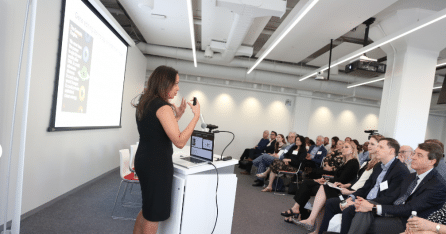
NYSCF scientists did exactly this as part of a collaborative study with scientists at The Rockefeller University led by Dr. Marc Tessier-Lavigne. The researchers introduced a mutated copy of a certain gene into healthy brain cells made from stem cells, which caused the cells to show an increased amount of beta amyloid, the plaques found in Alzheimer’s patients. In another study conducted in collaboration with Dr. Sanjana, NYSCF scientists corrected a mutation in the stem cells of a patient with Alexander disease—a rare nervous system disorder. The team then observed that as the stem cells matured into brain cells, they showed less of the dysfunction found in the disease.
These studies demonstrate the power of stem cells and gene editing for recapitulating the characteristics of disease, creating a better understanding of their genetic basis, and opening the door for possible therapeutics aimed at addressing the disease’s root cause. These applications of ‘CRISPR in a dish’ are accelerating disease research at NYSCF and throughout the scientific community; some scientists have begun using CRISPR itself as a therapeutic.
How can Gene Editing be used to Treat Disease?
CRISPR technology presents a new opportunity for treating diseases with a genetic component. Some diseases, including many rare diseases, are the result of a single genetic mutation. Fix the mutation, and theoretically, you can cure the disease. For example, some patients with sickle cell anemia (a rare blood disorder which results in deformed blood cells and can cause extreme pain and fatigue) have undergone a gene therapy to repair their disease-causing mutation and have seen overwhelmingly positive results. The Doris Duke Charitable Foundation is funding some of these trials, and Dr. Myers, who oversees the organization’s multimillion-dollar research portfolio, is overjoyed with the strides being made in the treatment of this devastating disease.
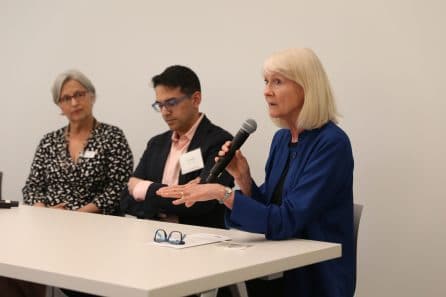
“This is really exciting for the community,” Dr. Myers remarked. “We have a national registry of clinical trials which currently includes six trials using gene therapies to treat sickle cell. It’s a whole new world.”
What Happens When Changes Are Heritable?
Importantly, the changes made to the genes of the sickle cell patients were done in somatic, or adult, cells, which make up most of our bodies. These changes cannot get passed down to offspring. When a change is made in embryos, however, it carries through to germline cells that are inherited by the next generation, which introduces more serious implications.
For as advanced as gene editing is, it’s not perfect. CRISPR is known to have off-target/unintended effects on other regions of the genome. It is not yet clear how certain off-target effects may impact patients, and many argue that altering the human germline in this way would be extremely negligent.
“The technology’s not precise enough yet. Controls aren’t there. The off-target effects are too unpredictable,” explained Dr. Kahn, who directs the Berman Institute’s efforts to examine the intersection of ethics and science/health policy. “To say we’re going to go forward to make babies this way is wildly irresponsible.”
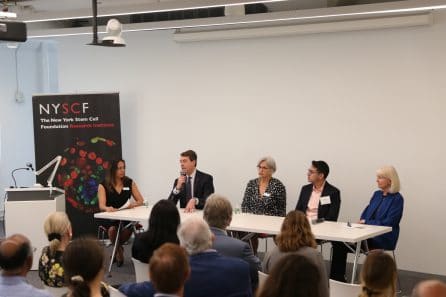
Dr. Kahn was referring to a recent case in which Chinese scientist Dr. He Jiankui used CRISPR to edit embryos which were then implanted into a woman, and which resultedin the birth of twins. Dr. He suggested that the gene editing would protect the babies from HIV (their father was infected). However, this work was carried out in secret, without institutional review, and in violation of established international consensus.
“An international consensus committee laid out the conditions in 2017 for going forward in human uses of genome editing tools,” Dr. Kahn explained. “To go forward with germline editing, many different precautions would need to be taken, and we thought it would be decades before they would ever be met. Ignoring this consensus was the line that Dr. He crossed, and we were all aghast.”
“This was completely inappropriate and not the right time,” added Ms. Solomon. NYSCF shares Dr. Kahn’s concerns, as Dr. He’s actions constitute a premature clinical use of CRISPR technology and go against the global consensus in the scientific community against engineering inheritable genetic changes.
Additionally, there are already methods other than gene editing that can prevent HIV from being passed down from parent to child. The panelists all agreed that an unmet medical need is a key consideration for applying gene editing in humans.
“With sickle cell anemia, there’s a clear need,” said Dr. Sanjana, who has helped pioneer gene editing technologies and served as the first postdoctoral fellow in the laboratory of NYSCF – Robertson Stem Cell Investigator and MIT Professor Dr. Feng Zhang. “It’s a painful disease for which therapies are inadequate, and it can be treated in somatic cells. With germline editing, however, there are technologies we’ve had for decades which can address many of these issues, including HIV.”
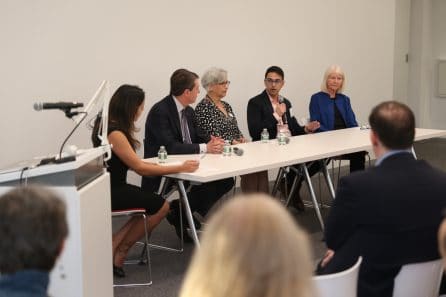
“When something’s a treatment, it seems like a clear and appropriate application,” said Dr. Kahn. “But the line between curing disease and human enhancement sounds much easier to distinguish than it actually is. That’s another big part of the policy and ethics debate.”
So What’s Next for Gene Editing?
What is clear is that as gene editing becomes more advanced, an open dialogue about how and when to use it is essential.
“It is important to have continuing conversations that include scientists and the public,” remarked Ms. Solomon. “When you stop paying attention, things slide back under the radar, and we cannot let that happen.”
As for the technology itself, the panelists expressed their excitement for its continued and improved use in understanding and treating disease.
“The speed in which we are now understanding the human genome is transformational,” said Dr. Sanjana. “We’ve learned so much about cancer immunotherapies and neurodevelopmental disorders, and in the next 10 years, I’m sure we’ll know much more.”
“I think that we’re on the cusp of gene editing therapies actually working,” added Ms. Solomon. “For the past 30 years there have been attempts with tools that just haven’t been that successful. Now the tools exist to actually take these therapeutics and bring them to human use, and that’s very exciting.”
Watch highlights of the symposium below.

